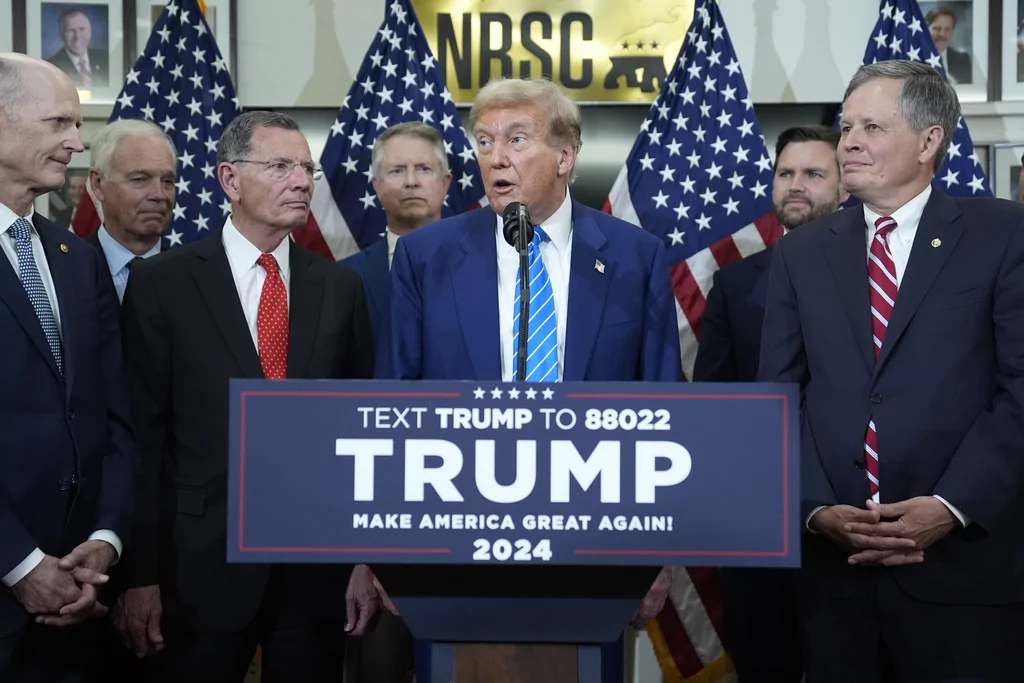
President-elect Donald Trump’s bid to shake up how the Senate confirms his Cabinet and other appointments has more potential to weaken his agenda rather than kick-start it.
His desire to use so-called recess appointments would erode the Senate’s power and tradition by sidestepping the confirmation process, and the Democratic obstruction that comes with it, for appointees.
But it’s a route that’s likely more precarious and cumbersome for a GOP majority that will have 53 seats to Democrats’ 47 than is worthwhile. That is, unless Trump plans to offer a slate of nominees who would fail to garner a simple 50-vote majority for confirmation, or he wants individuals in roles only temporarily. (Recess appointments can last no longer than two years without confirmation.)
“Any Republican Senator seeking the coveted LEADERSHIP position in the United States Senate must agree to Recess Appointments (in the Senate!), without which we will not be able to get people confirmed in a timely manner,” Trump posted on social media over the weekend. “We need positions filled IMMEDIATELY!”
All three candidates to replace Senate GOP Leader Mitch McConnell (R-KY) — Whip John Thune (R-SD), former Whip John Cornyn (R-TX), and Sen. Rick Scott (R-FL) — quickly agreed ahead of Wednesday’s leadership vote. But the move would be out of character for a chamber that prides itself on its constitutional “advice and consent” role.
Trump’s first problem is that the Senate would need to be out of session for a minimum of 10 days to make any recess appointments, according to a 2014 Supreme Court ruling when then-President Barack Obama tried to make appointments after just a few days. That’s why senators conduct so-called pro forma sessions every few days during extended recesses longer than a weekend. They’re as short as a minute and often don’t include any official business.

The purpose of recess appointments, a constitutional power used regularly by past presidents, is to “provide an alternative method of appointment that would allow the filling of vacancies ‘without delay’ during periods of Senate absence,” according to the nonpartisan Congressional Research Service.
Being off of work for extended periods could undermine congressional Republicans’ stated objective of passing an ambitious legislative agenda within the first 100 days of Trump’s second-term presidency and the political message they’re ready to get to work for the country.
Democrats could put up a fight to recessing, which only needs a simple majority, by flooding a recess resolution with endless amendments and debate. Republicans would need 60 votes to put an end to it and support from at least seven Democrats.
Adopting a carveout to lowering that 60-vote filibuster threshold could lead to its further weakening under future Democratic majorities.
When lawmakers left Washington in 2020 during the early days of the pandemic, Trump threatened to use another constitutional tool at his disposal: forcing the Senate to adjourn. He could do the same this go-around, but the move would be unprecedented and almost certainly spur a legal challenge.
Appointees themselves may also be reluctant to accept a recess appointment. While a confirmed appointee and a recess appointee have the same legal authority and are paid at the same rate, the recess appointees don’t necessarily get to collect their paychecks.
KEY DATES FOR THE 2024 PRESIDENTIAL TRANSITION
Recess appointees won’t get paid if the position became vacant while the Senate was in session with the following exceptions: the vacancy was within 30 days of a Senate session; a nominee was pending when the Senate recessed; or a nominee was rejected within 30 days of a session and another person recess appointed.
Perhaps most importantly, Senate Republicans already plan to jump-start the transition process when they take control on Jan. 3 so they’re ready to confirm nominees when Trump takes office on Jan. 20. This includes holding confirmation hearings and vetting individuals in the weeks between the new Congress and Trump entering the White House, further undercutting the argument for recess appointments.







